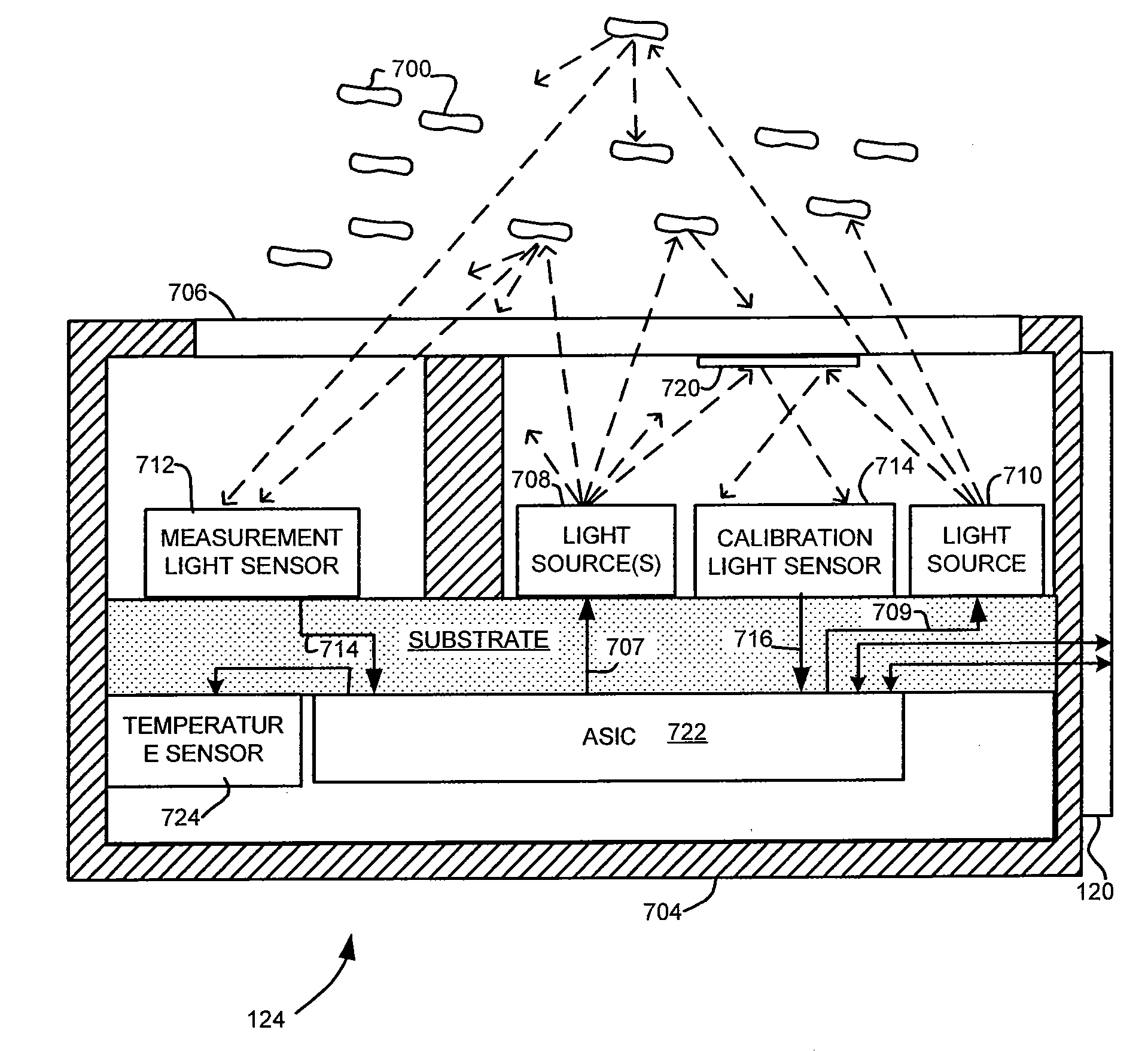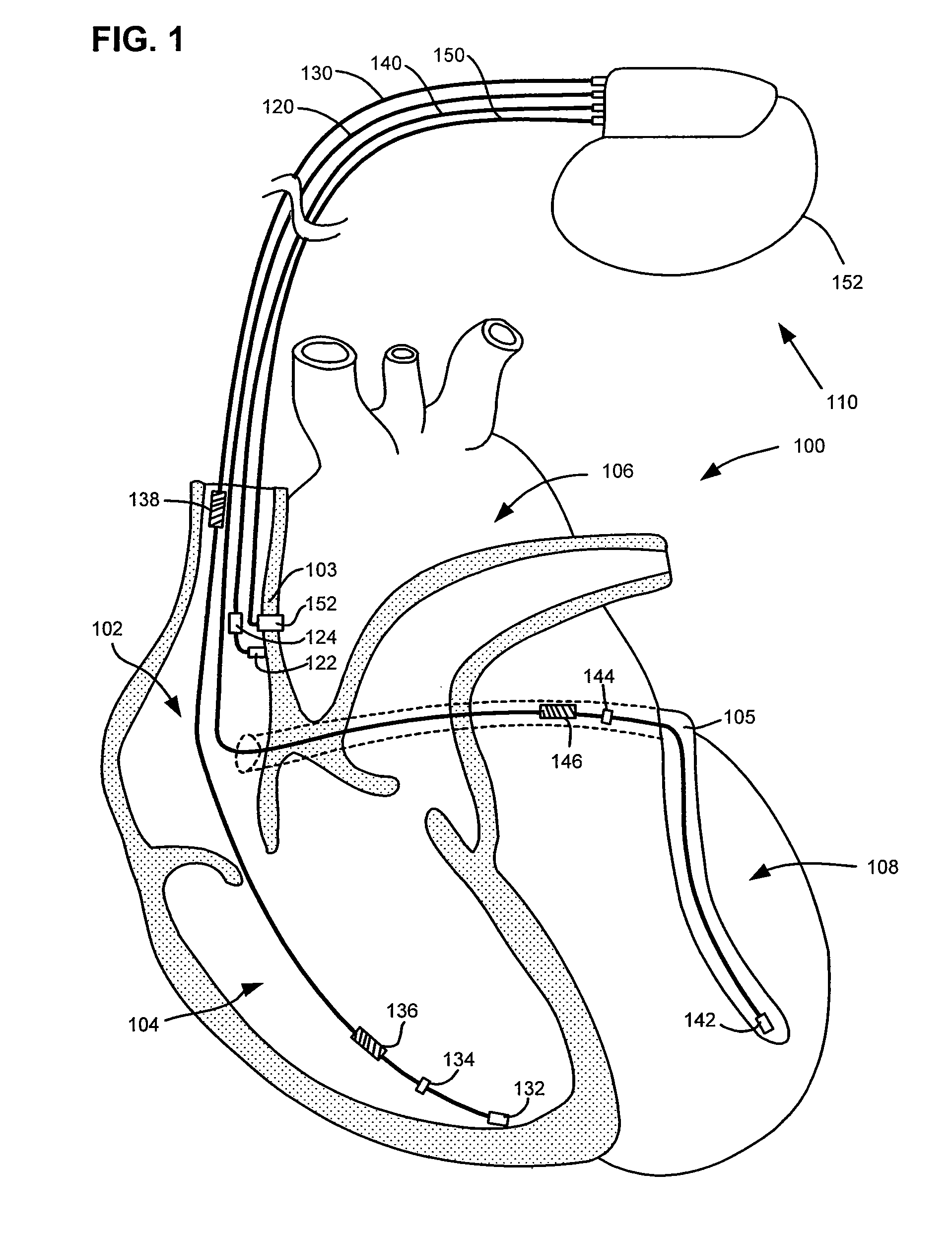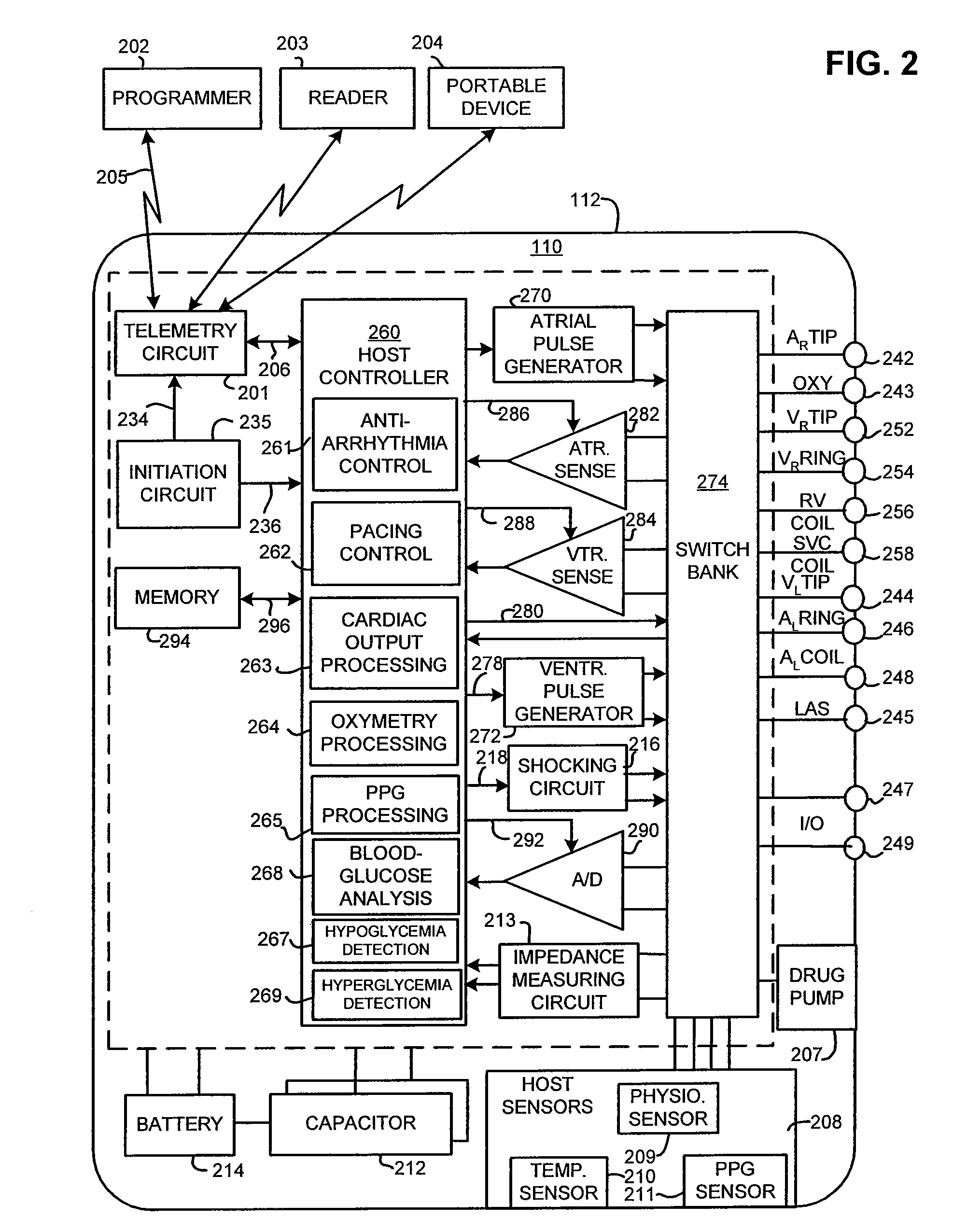Method and implantable system for blood-glucose concentration monitoring using parallel methodologies
a blood glucose and monitoring method technology, applied in the field of methods and implantable systems, can solve the problems of sudden death, hypoglycemia-induced arrhythmia, adverse consequences for diabetics and individuals with cardiac disease, etc., and achieve the effect of reliably and accurately measuring blood glucose concentration and reliable calculation
- Summary
- Abstract
- Description
- Claims
- Application Information
AI Technical Summary
Benefits of technology
Problems solved by technology
Method used
Image
Examples
Embodiment Construction
[0034]The following description is of the best modes presently contemplated for practicing various embodiments of the present invention. The description is not to be taken in a limiting sense but is made merely for the purpose of describing the general principles of the invention. The scope of the invention should be ascertained with reference to the claims. In the description of the invention that follows, like numerals or reference designators will be used to refer to like parts or elements throughout. In addition, the left-most digit of a reference number identifies the drawing in which the reference number first appears.
[0035]This detailed description is organized in sections as follows:[0036]1. Implantable Stimulation Device;[0037]2. Programmer;[0038]3. Metabolic Oxygen Conformation Method For Blood-Glucose Analysis;[0039]4. Method For Enhanced Blood-Glucose Analysis Using Metabolic Oxygen Conformation and EGM;[0040]5. Oxymetry and PPG Sensors;[0041]6. Detection / Confirmation of...
PUM
 Login to View More
Login to View More Abstract
Description
Claims
Application Information
 Login to View More
Login to View More - R&D
- Intellectual Property
- Life Sciences
- Materials
- Tech Scout
- Unparalleled Data Quality
- Higher Quality Content
- 60% Fewer Hallucinations
Browse by: Latest US Patents, China's latest patents, Technical Efficacy Thesaurus, Application Domain, Technology Topic, Popular Technical Reports.
© 2025 PatSnap. All rights reserved.Legal|Privacy policy|Modern Slavery Act Transparency Statement|Sitemap|About US| Contact US: help@patsnap.com



